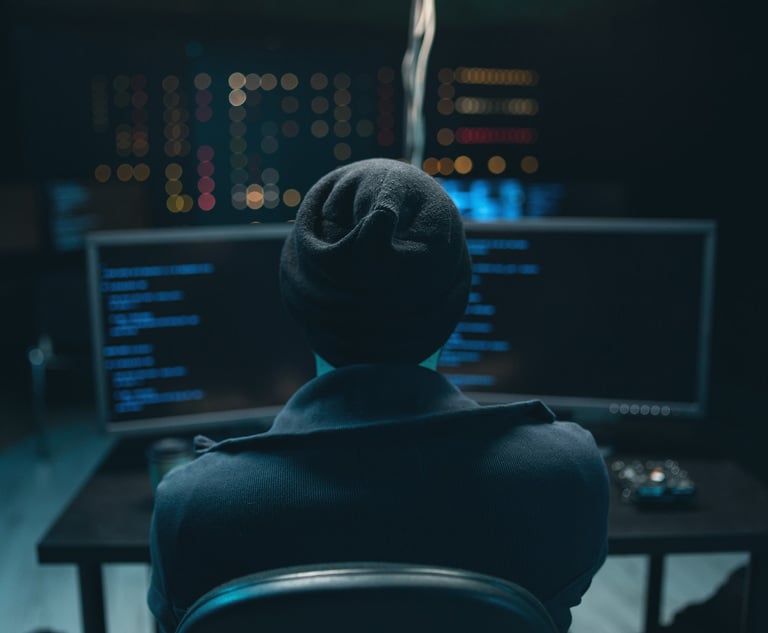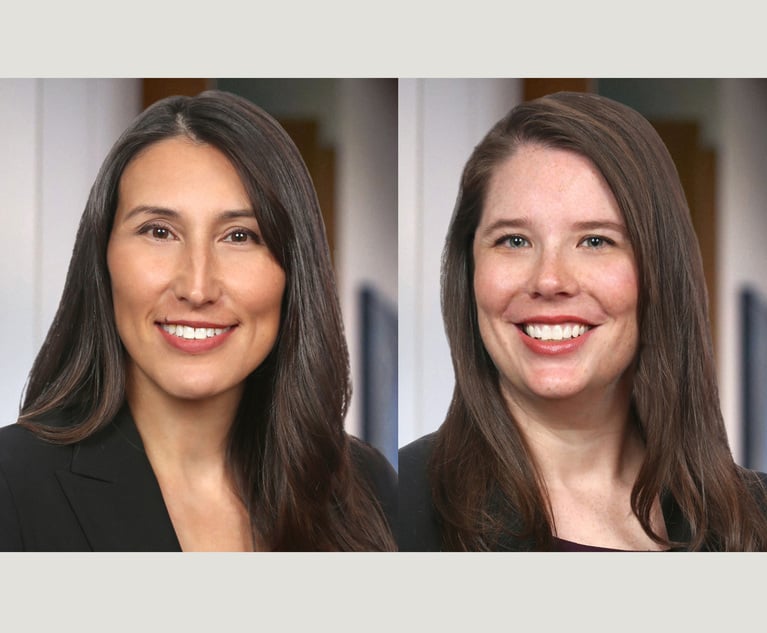Lawyers Who Can Harness Internet of Things Data in E-Discovery Gain 'Biggest Advantage'
E-discovery practitioners are challenged by the quantity and variety of internet of things device data. But that doesn't mean they can ignore it.
March 19, 2019 at 09:30 AM
3 minute read
The original version of this story was published on Legal Tech News
 Photo: Shutterstock
Photo: Shutterstock
While internet of things (IoT) devices can hold volumes of discoverable data that may make or break a case, many attorneys often ignore such technology because of the difficulty in accessing and understanding the data. But as IoT devices become more popular, experts say it's not a subject attorneys can bury their heads in the sand over.
Smartphones may be the first item that comes to mind when you hear the term internet of things. However, items such as Fitbits, Amazon's Alexa, self-vacuuming Roombas and internet-connected cars also fall under the IoT umbrella. After all, IoT pertains to any physical item connected to the internet that collects and shares data.
Dana Conneally, managing partner at QDiscovery and Evidox Corp., noted IoT devices may have multiple data repositories, which creates more data for attorneys to review.
“You want to know what's on the hard drive of the device, but they are typically connected to the internet and cloud. … Now you have three different rabbit holes you are trying to chase down at the same time,” Conneally said.
Such devices represent a new source of evidence for a lawyer's clients, but how to find value in such data can be difficult.
“Attorneys, a lot of the time, haven't been trained how to do that,” said Cozen O'Connor e-discovery and practice advisory services group chairman Dave Walton. “What are the types of evidence out there? We need to know to win in this environment.”
Walton said attorneys are “overwhelmed” by IoT devices in e-discovery, and they usually reason that it's not practical to assess such devices. However, Walton suggested lawyers should always evaluate if their client's legal matter warrants obtaining information from an IoT device and make proportional requests for the data, an approach that also governs other types of discoverable content.
“You have to be proportional about how you go about the evidence. The more you know about the evidence, the better you know about alternatives” and efficient ways to obtain the evidence, Walton said.
From the e-discovery vendor perspective, Conneally said it's rare for attorneys to consider IoT devices for preservation, but it is occurring more frequently. He said he's seen hesitancy because it will increase the volume of data to inspect and the data may be complex to decipher.
Regulations also pose a challenge when processing an IoT device data for e-discovery. Walton cited the Electronic Communications Privacy Act and Stored Communications Act as laws that offer specific regulations governing IoT devices.
Still, the U.S.'s lack of a national privacy law creates a “Wild West” out of the type of personal data collected by devices, Walton added.
But even with a fluid regulatory landscape, harnessing such massive data may prove an invaluable skill for any attorney. “Whoever can figure out how to use this evidence and be the best at it will have the biggest advantage in representing their clients,” Walton said.
This content has been archived. It is available through our partners, LexisNexis® and Bloomberg Law.
To view this content, please continue to their sites.
Not a Lexis Subscriber?
Subscribe Now
Not a Bloomberg Law Subscriber?
Subscribe Now
NOT FOR REPRINT
© 2025 ALM Global, LLC, All Rights Reserved. Request academic re-use from www.copyright.com. All other uses, submit a request to [email protected]. For more information visit Asset & Logo Licensing.
You Might Like
View All
Settlement Dilemma in Data Breach Actions: Risk, Strategy, and Legal Insights
5 minute read


Trending Stories
- 1Apply Now: Superior Court Judge Sought for Mountain Judicial Circuit Bench
- 2Harrisburg Jury Hands Up $1.5M Verdict to Teen Struck by Underinsured Driver
- 3Former Director's Retaliation Suit Cleared to Move Forward Against Hospice Provider
- 4New York Judge Steps Down After Conviction for Intoxicated Driving
- 5Keys to Maximizing Efficiency (and Vibes) When Navigating International Trade Compliance Crosschecks
Who Got The Work
J. Brugh Lower of Gibbons has entered an appearance for industrial equipment supplier Devco Corporation in a pending trademark infringement lawsuit. The suit, accusing the defendant of selling knock-off Graco products, was filed Dec. 18 in New Jersey District Court by Rivkin Radler on behalf of Graco Inc. and Graco Minnesota. The case, assigned to U.S. District Judge Zahid N. Quraishi, is 3:24-cv-11294, Graco Inc. et al v. Devco Corporation.
Who Got The Work
Rebecca Maller-Stein and Kent A. Yalowitz of Arnold & Porter Kaye Scholer have entered their appearances for Hanaco Venture Capital and its executives, Lior Prosor and David Frankel, in a pending securities lawsuit. The action, filed on Dec. 24 in New York Southern District Court by Zell, Aron & Co. on behalf of Goldeneye Advisors, accuses the defendants of negligently and fraudulently managing the plaintiff's $1 million investment. The case, assigned to U.S. District Judge Vernon S. Broderick, is 1:24-cv-09918, Goldeneye Advisors, LLC v. Hanaco Venture Capital, Ltd. et al.
Who Got The Work
Attorneys from A&O Shearman has stepped in as defense counsel for Toronto-Dominion Bank and other defendants in a pending securities class action. The suit, filed Dec. 11 in New York Southern District Court by Bleichmar Fonti & Auld, accuses the defendants of concealing the bank's 'pervasive' deficiencies in regards to its compliance with the Bank Secrecy Act and the quality of its anti-money laundering controls. The case, assigned to U.S. District Judge Arun Subramanian, is 1:24-cv-09445, Gonzalez v. The Toronto-Dominion Bank et al.
Who Got The Work
Crown Castle International, a Pennsylvania company providing shared communications infrastructure, has turned to Luke D. Wolf of Gordon Rees Scully Mansukhani to fend off a pending breach-of-contract lawsuit. The court action, filed Nov. 25 in Michigan Eastern District Court by Hooper Hathaway PC on behalf of The Town Residences LLC, accuses Crown Castle of failing to transfer approximately $30,000 in utility payments from T-Mobile in breach of a roof-top lease and assignment agreement. The case, assigned to U.S. District Judge Susan K. Declercq, is 2:24-cv-13131, The Town Residences LLC v. T-Mobile US, Inc. et al.
Who Got The Work
Wilfred P. Coronato and Daniel M. Schwartz of McCarter & English have stepped in as defense counsel to Electrolux Home Products Inc. in a pending product liability lawsuit. The court action, filed Nov. 26 in New York Eastern District Court by Poulos Lopiccolo PC and Nagel Rice LLP on behalf of David Stern, alleges that the defendant's refrigerators’ drawers and shelving repeatedly break and fall apart within months after purchase. The case, assigned to U.S. District Judge Joan M. Azrack, is 2:24-cv-08204, Stern v. Electrolux Home Products, Inc.
Featured Firms
Law Offices of Gary Martin Hays & Associates, P.C.
(470) 294-1674
Law Offices of Mark E. Salomone
(857) 444-6468
Smith & Hassler
(713) 739-1250





